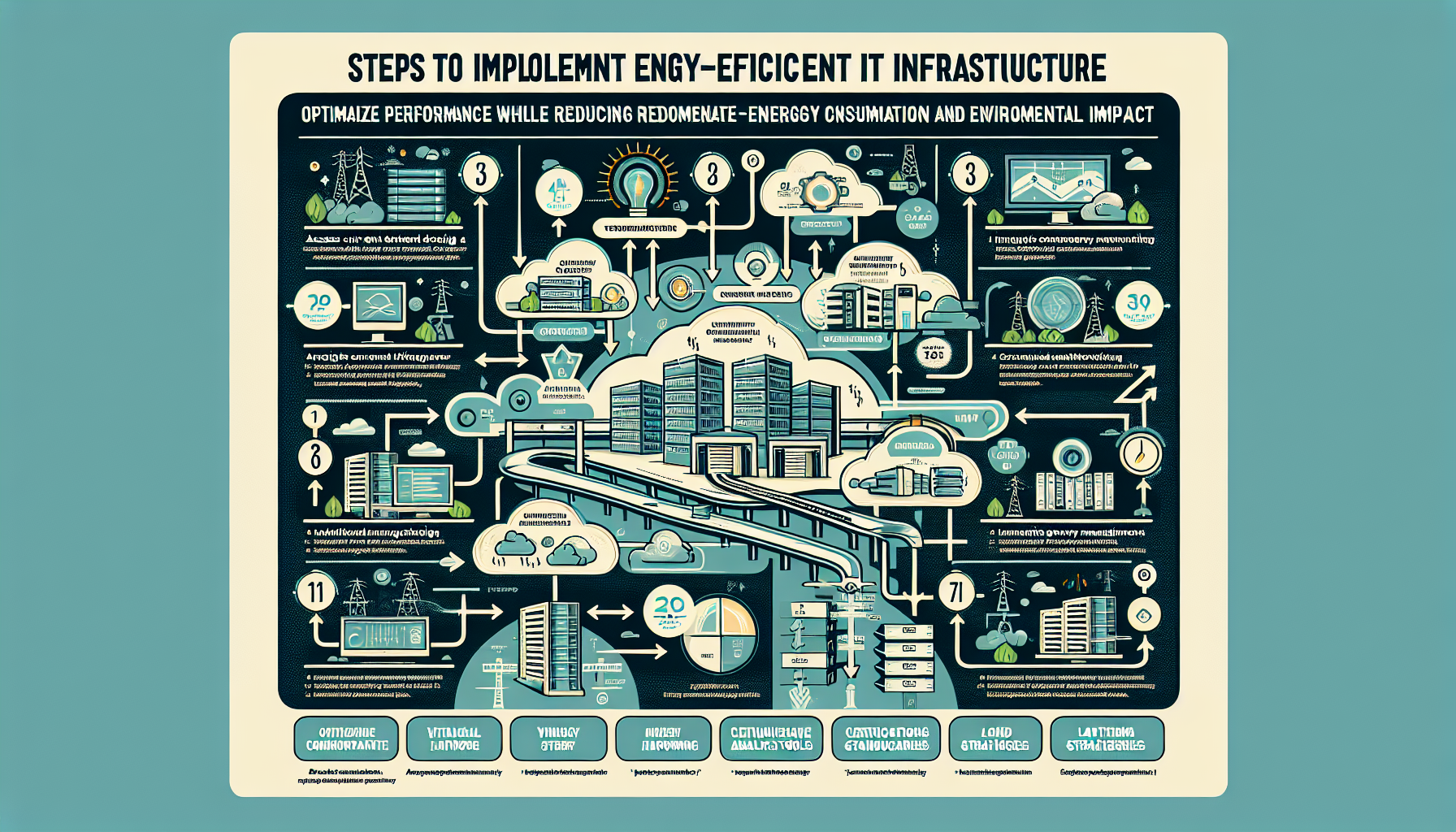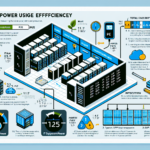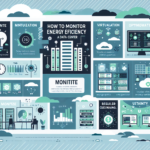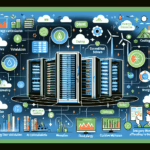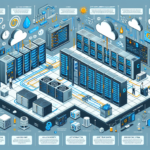Implementing energy-efficient IT infrastructure is critical for reducing operational costs, improving sustainability, and meeting environmental compliance goals. Below are detailed steps and best practices to design and implement energy-efficient computing infrastructure:
1. Assess Current Infrastructure
- Conduct an Energy Audit: Measure the energy consumption of your current IT systems, including servers, storage, networking, and cooling systems.
- Identify Inefficiencies: Pinpoint areas of high energy usage, such as underutilized servers, inefficient cooling systems, or aging hardware.
- Set Baselines: Establish metrics such as Power Usage Effectiveness (PUE) to monitor and improve energy efficiency.
2. Optimize Datacenter Design
- Hot/Cold Aisle Containment:
- Use hot and cold aisle containment to separate warm air generated by servers from cooler intake air, improving cooling efficiency.
- Airflow Management:
- Seal gaps in racks and use blanking panels to prevent air recirculation.
- Install raised flooring or overhead cooling systems for better airflow management.
- Efficient Cooling Systems:
- Invest in energy-efficient cooling technologies like liquid cooling, economizers, or free air cooling.
- Location Considerations:
- Place datacenters in cooler climates to leverage natural cooling.
- Use renewable energy sources like wind or solar power where possible.
3. Virtualization and Consolidation
- Server Consolidation:
- Use virtualization platforms (e.g., VMware, Hyper-V, KVM) to consolidate workloads onto fewer physical servers, reducing power consumption.
- Right-Sizing Hardware:
- Match workloads with appropriately sized servers to avoid over-provisioning.
- Use high-density servers and blade enclosures to reduce space and power requirements.
- Containerization:
- Implement container platforms like Docker or Kubernetes for lightweight deployment and better resource utilization.
4. Modernize Hardware
- Energy-Efficient Servers:
- Upgrade to modern servers with energy-efficient processors (e.g., Intel Xeon Scalable, AMD EPYC).
- Use hardware with built-in power management features like dynamic voltage scaling.
- High-Efficiency GPUs:
- For AI and compute-intensive tasks, deploy energy-efficient GPUs (e.g., NVIDIA A100, AMD Instinct) optimized for power-to-performance ratios.
- Storage:
- Replace spinning disk drives (HDDs) with SSDs, which consume less power and generate less heat.
- Use tiered storage to move infrequently accessed data to energy-efficient storage solutions.
5. Energy-Efficient Networking
- Upgrade to Modern Network Devices:
- Use energy-efficient switches and routers with low-power idle modes.
- Software-Defined Networking (SDN):
- Implement SDN to optimize network traffic and reduce unnecessary data transfer.
- Cable Management:
- Organize cables to minimize signal interference and cooling inefficiencies.
6. Implement Intelligent Power Management
- Dynamic Power Scaling:
- Enable power-saving features in servers, such as turning off idle cores or adjusting clock speeds.
- Monitor Power Usage:
- Use tools like Intel Node Manager or Dell OpenManage to monitor and manage power consumption at the server level.
- Automated Shutdown:
- Implement policies to shut down or hibernate idle systems automatically.
7. Leverage Renewable Energy
- On-Site Generation:
- Install solar panels or wind turbines on-site to offset grid power consumption.
- Energy Storage:
- Use battery storage systems to reduce reliance on non-renewable energy during peak hours.
- Green Energy Contracts:
- Partner with energy providers to use renewable energy sources like hydroelectric or geothermal power.
8. Utilize Monitoring and Analytics Tools
- Energy Monitoring Software:
- Deploy tools like PRTG, SolarWinds, or Schneider Electric EcoStruxure to monitor real-time energy usage.
- AI for Predictive Analytics:
- Use AI-based tools to predict workload peaks and adjust resources dynamically to minimize energy waste.
- Dashboards and Reporting:
- Create dashboards for visualizing energy consumption trends and identifying optimization opportunities.
9. Adopt Cloud and Hybrid Solutions
- Migrate to Energy-Efficient Cloud Providers:
- Partner with cloud providers that prioritize sustainability, such as AWS (with carbon-neutral initiatives), Google Cloud, or Microsoft Azure.
- Hybrid Cloud:
- Use a hybrid model to balance on-premises infrastructure with cloud resources, optimizing energy consumption based on workload needs.
10. Educate and Train Staff
- Awareness Programs:
- Train IT staff on energy-efficient best practices, such as proper server decommissioning or efficient workload management.
- Collaboration:
- Encourage collaboration between IT, facilities, and operations teams for holistic energy optimization.
11. Certifications and Standards
- Compliance:
- Follow industry standards such as ISO 50001 (Energy Management) or ENERGY STAR for datacenters.
- Certify Your Datacenter:
- Pursue certifications like LEED or Uptime Institute’s Green Datacenter Certification.
12. Long-Term Strategies
- AI for Workload Optimization:
- Use machine learning algorithms to predict and optimize workload distribution for energy efficiency.
- Edge Computing:
- Deploy edge computing to process data closer to the source, reducing the energy required for data transmission.
- Lifecycle Management:
- Implement a lifecycle management strategy to upgrade or decommission aging equipment.
Tools and Technologies:
- Virtualization Platforms: VMware, Hyper-V, KVM
- Container Orchestration: Kubernetes, OpenShift
- Monitoring Tools: Nagios, Zabbix, PRTG
- Energy Analytics: Schneider Electric EcoStruxure, Cisco EnergyWise
- AI Workload Tools: NVIDIA AI Enterprise, Intel DL Boost
By implementing these strategies, you can significantly reduce energy consumption in your IT infrastructure while maintaining or even improving performance.
How do I implement IT infrastructure for energy-efficient computing?
